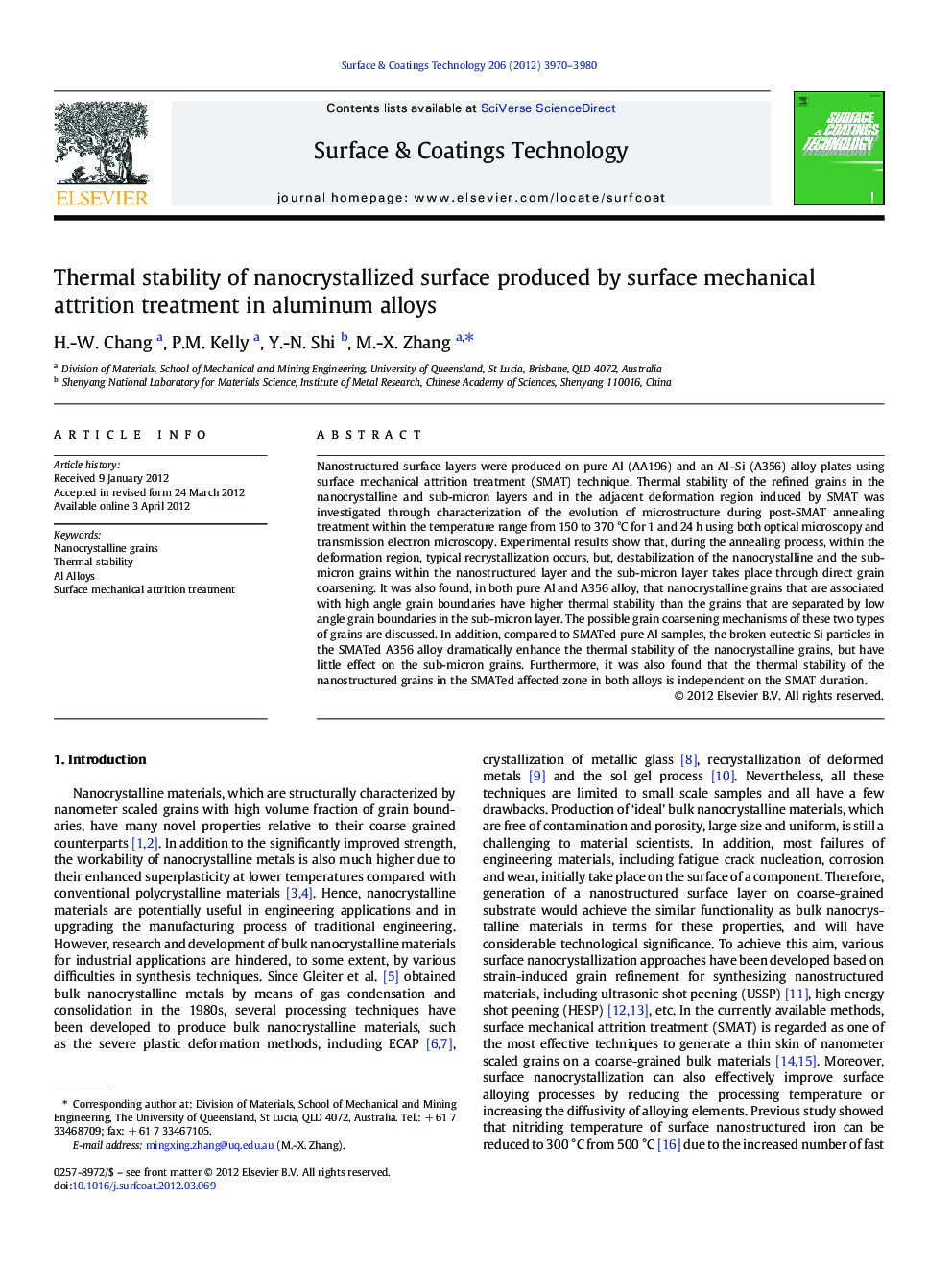| کد مقاله | کد نشریه | سال انتشار | مقاله انگلیسی | نسخه تمام متن |
|---|---|---|---|---|
| 1658427 | 1517672 | 2012 | 11 صفحه PDF | دانلود رایگان |

Nanostructured surface layers were produced on pure Al (AA196) and an Al–Si (A356) alloy plates using surface mechanical attrition treatment (SMAT) technique. Thermal stability of the refined grains in the nanocrystalline and sub-micron layers and in the adjacent deformation region induced by SMAT was investigated through characterization of the evolution of microstructure during post-SMAT annealing treatment within the temperature range from 150 to 370 °C for 1 and 24 h using both optical microscopy and transmission electron microscopy. Experimental results show that, during the annealing process, within the deformation region, typical recrystallization occurs, but, destabilization of the nanocrystalline and the sub-micron grains within the nanostructured layer and the sub-micron layer takes place through direct grain coarsening. It was also found, in both pure Al and A356 alloy, that nanocrystalline grains that are associated with high angle grain boundaries have higher thermal stability than the grains that are separated by low angle grain boundaries in the sub-micron layer. The possible grain coarsening mechanisms of these two types of grains are discussed. In addition, compared to SMATed pure Al samples, the broken eutectic Si particles in the SMATed A356 alloy dramatically enhance the thermal stability of the nanocrystalline grains, but have little effect on the sub-micron grains. Furthermore, it was also found that the thermal stability of the nanostructured grains in the SMATed affected zone in both alloys is independent on the SMAT duration.
► After SMAT, the destabilization mechanism of deformation zone differs from others.
► Nano and sub-micro grains are coarsened by direct grain growth and grain merging.
► Destabilization of the deformations region takes place by recrystallization.
► The thermal stability of the SMAT affected zone relates to the SMAT durations.
► Si increases the thermal stability of the nanocrystalline and sub-micro grains.
Journal: Surface and Coatings Technology - Volume 206, Issues 19–20, 25 May 2012, Pages 3970–3980